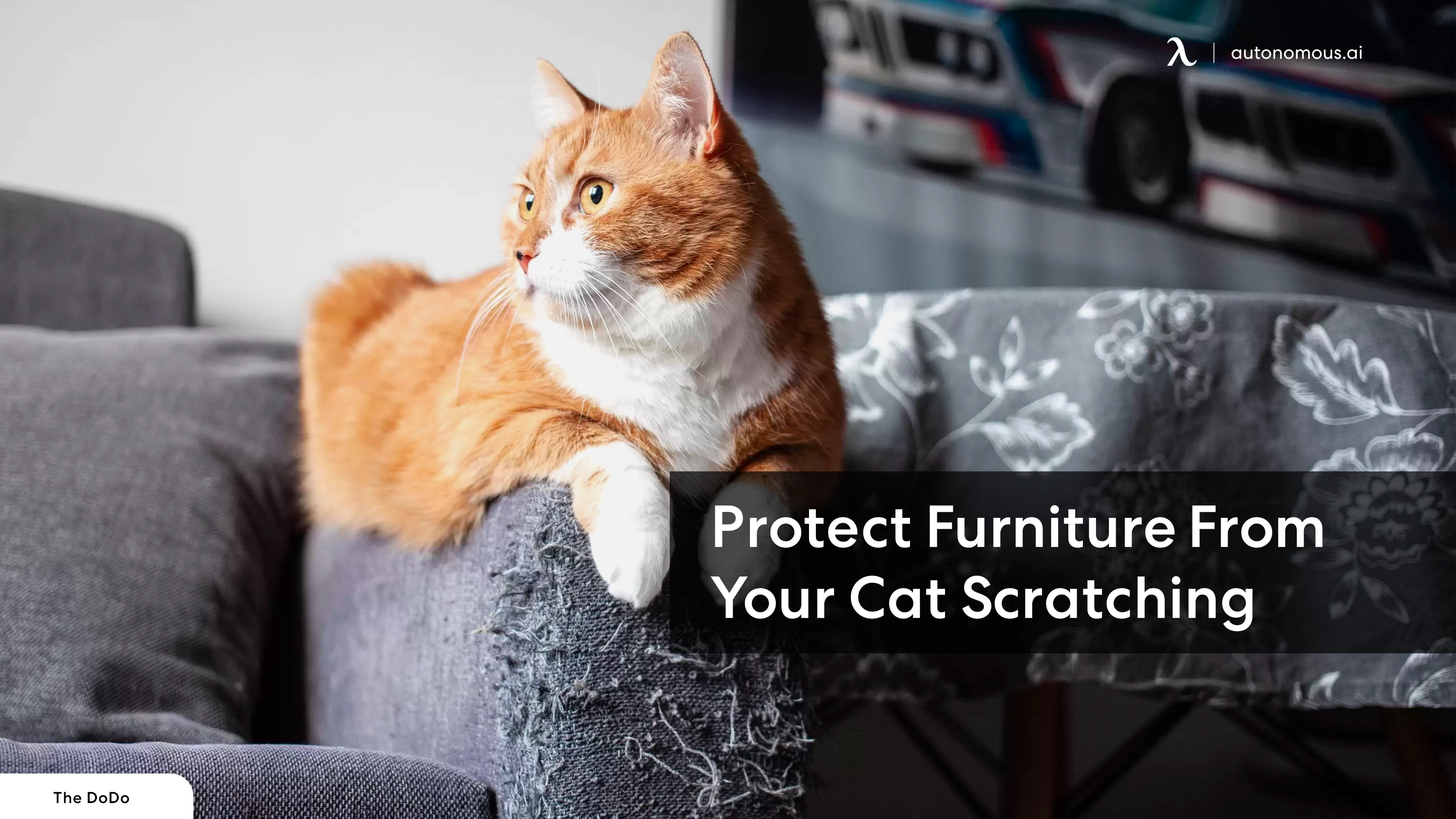
How to Protect Furniture From Your Cat Scratching | 10 Tips for Pet Parents
Having a cat around the house can be one of the most rewarding experiences for you and your family. However, it does come with its challenges; chief among them being the issue of needing to provide adequate furniture protection from cats.
The claws of your cat can do a lot of damage to your home furniture if you are not careful. You could leave your cat alone for one afternoon and come back to a destroyed living room that will cost thousands of dollars to fix. Having your cat scratching furniture around the house is a very unpleasant and frustrating experience.
However, the good news is that there are ways to protect furniture from cat scratching it. If you apply a few simple tips and tricks, you can make sure that your studio apartment furniture is kept safe from those sharp claws.
In this article, we will look at the different things you can try out to provide furniture protection from cats, as well as the type of fabric materials that act as good furniture protectors from cats. If you are wondering how to protect furniture from cats, read on for some practical advice.
10 Great Tips to Protect Furniture From Cat Scratching
Considering how much it costs to buy ergonomic chairs and other essential office furniture required in a modern home office, the last thing you want is your cat wandering in and leaving scratch marks all over.
Consider these simple tips and tricks to protect furniture from cats scratching it:
1. Use Furniture Covers
If you have a particularly big problem on your hands, the best option for an immediate solution is to invest in strong furniture covers. While no one wants to keep their beautiful home office desk covered up all the time, it is better than watching it get ruined by your cat.
This method means you need to be ready to pay extra for furniture protectors, but it is nowhere near as much money as you would need to pay to replace your furniture. When choosing the best furniture covers, choose a material that is strong enough to withstand your cat's claws, while also being easy to clean.
If you would rather not keep your smart desk under wraps, you could try placing a cover or mat over the area where you have noticed your cat likes to spend time and scratch. However, this is not as effective as covering the entire area, as it leaves a lot of places exposed.
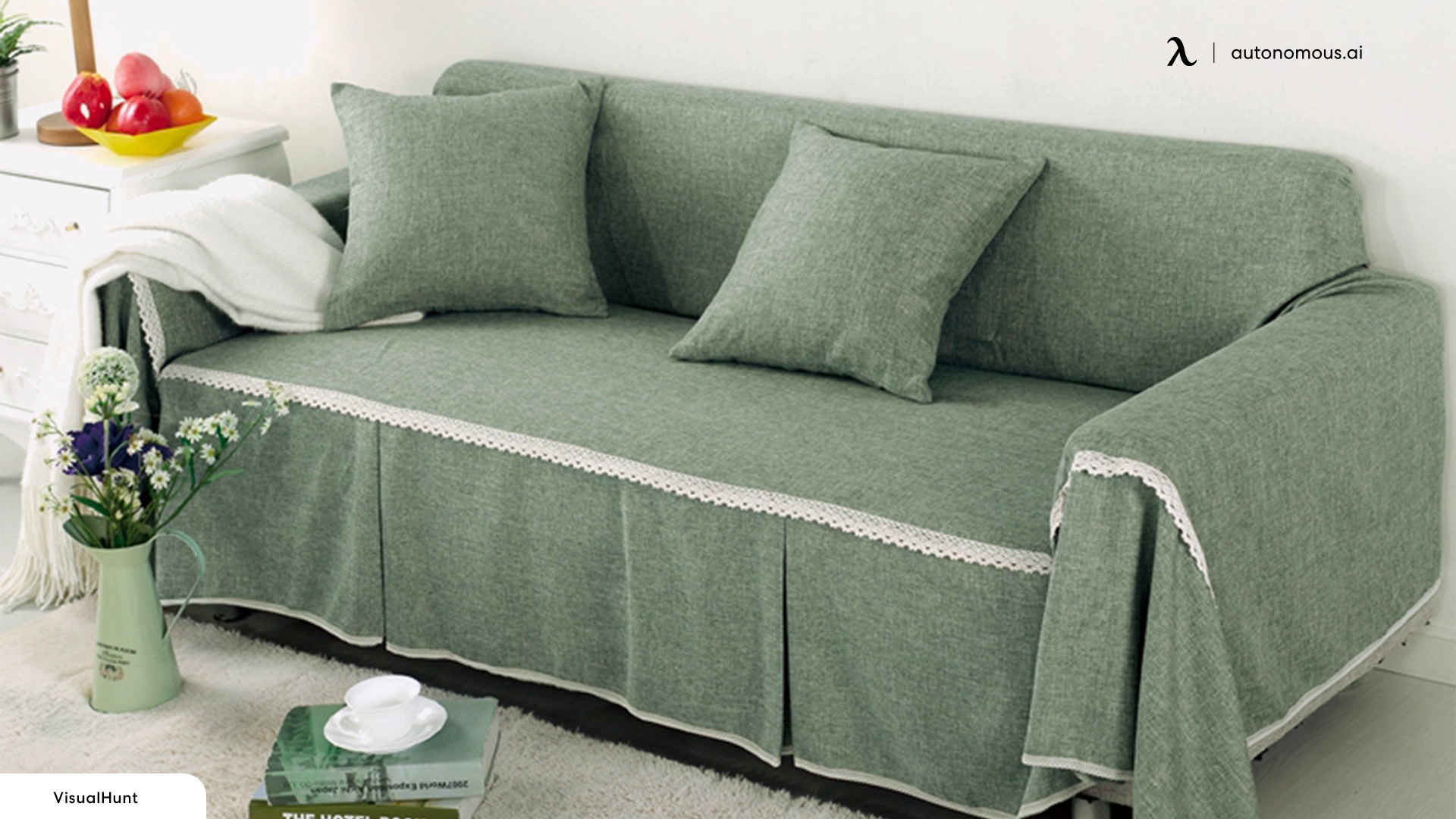
2. Address Bad Behavior Immediately
Just as important as rewarding good behavior, you need to address any bad habits immediately. A good trick is to startle your cat whenever you see it trying to scratch your furniture. Cats do not like being startled, so if they learn to associate scratching with this unpleasant experience for them, they will avoid leaving any claw marks on your furniture.
3. Try Spraying a Special Scent
There are certain smells that your cat cannot stand to be near, and if you apply these on your furniture, you can protect it from your cat’s claws. There are lots of commercially available scents that you can spray to keep your cat away from expensive furniture. Simply spray a little bit on, for example, your ergonomic stool, and rest assured your cat will not go anywhere near it.
Some chemicals, such as vinegar, will deter cats from scratching and also help you remove any mold on wood furniture. However, take care not to use any smells that may harm your cat because it has a very sensitive nose. Also, you will need to reapply the spray regularly to make sure the smell endures and is effective.

4. Lay Some Double-sided Tape
Another thing your cat will hate is the sticky feeling when its paws are stuck onto a double-sided length of tape. You can lay it over the areas that are exposed to scratching and eventually, your cat will get the message and stay away.
The downside of this is that the double-sided tape will make your furniture look very shabby. Ideally, this is only a temporary measure, meaning you will need to come up with a long-term solution.
5. Consistent Training Is Essential
If you choose to train your cat to stop its scratching behavior, you should be prepared for a few obstacles along the way. However, no matter what happens, you should know that training requires consistency so that your cat learns that you do not like it when it scratches your furniture.
6. Keep Those Sharp Claws in Check
If your cat does not have claws, it cannot leave scratch marks on the legs of your sit-stand desk. This is one of the most effective ways to protect furniture from cat-scratching. However, it is also a controversial issue among cat lovers.
Removing claws from your cat may cause it a lot of pain when walking. A better solution to providing furniture protection from cats is to simply keep your cat’s claws trimmed as short as possible. While your cat may still scratch your furniture, the amount of damage will be significantly less.
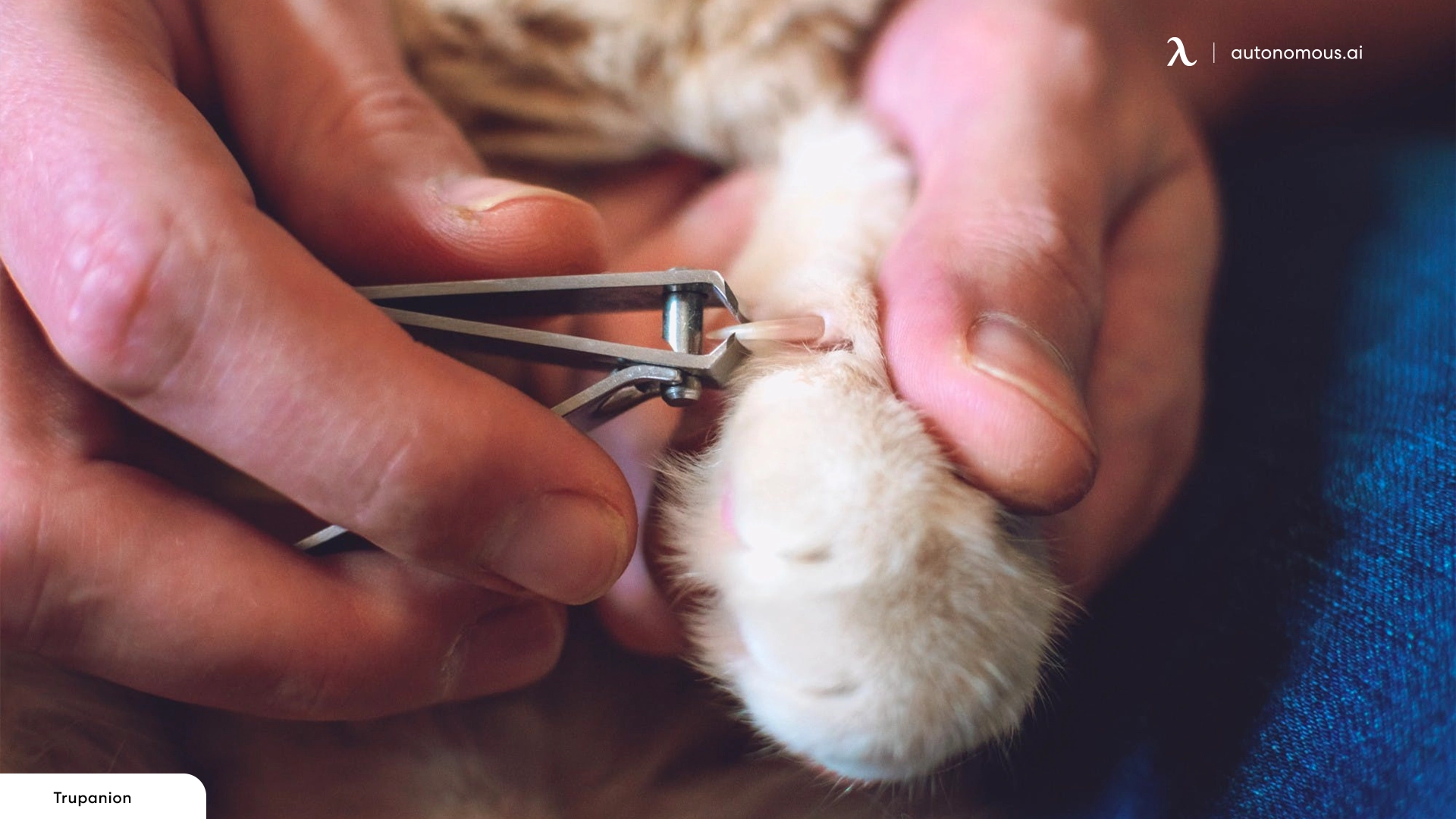
7. Good Training Goes a Long Way
Another effective solution is to train your cat to stay away from your L-shaped standing desk and other expensive furniture. This is not the easiest solution and often requires a lot of patience to train your cat even the most basic of house rules. If you find the process to be too difficult, there are professional trainers available that you can hire.
8. Give It a Treat for Good Behavior
One of the basic tricks used to train pets is to instantly reward them when they do something good. This reinforced their need to want to please you, which makes it easier to train them to stop scratching your furniture. You need to have some of your cat’s favorite treats handy for just such an occasion.
9. Give Your Cat Something to Scratch
Your cat has the instinct to want to scratch. No matter what you do, you can never get rid of that instinct entirely. It is better to give your cat a piece of wood, board, or other item to scratch whenever it feels the need. Try spraying some catnip on the area to encourage your pet to use this area instead of your ergonomic desk chair.
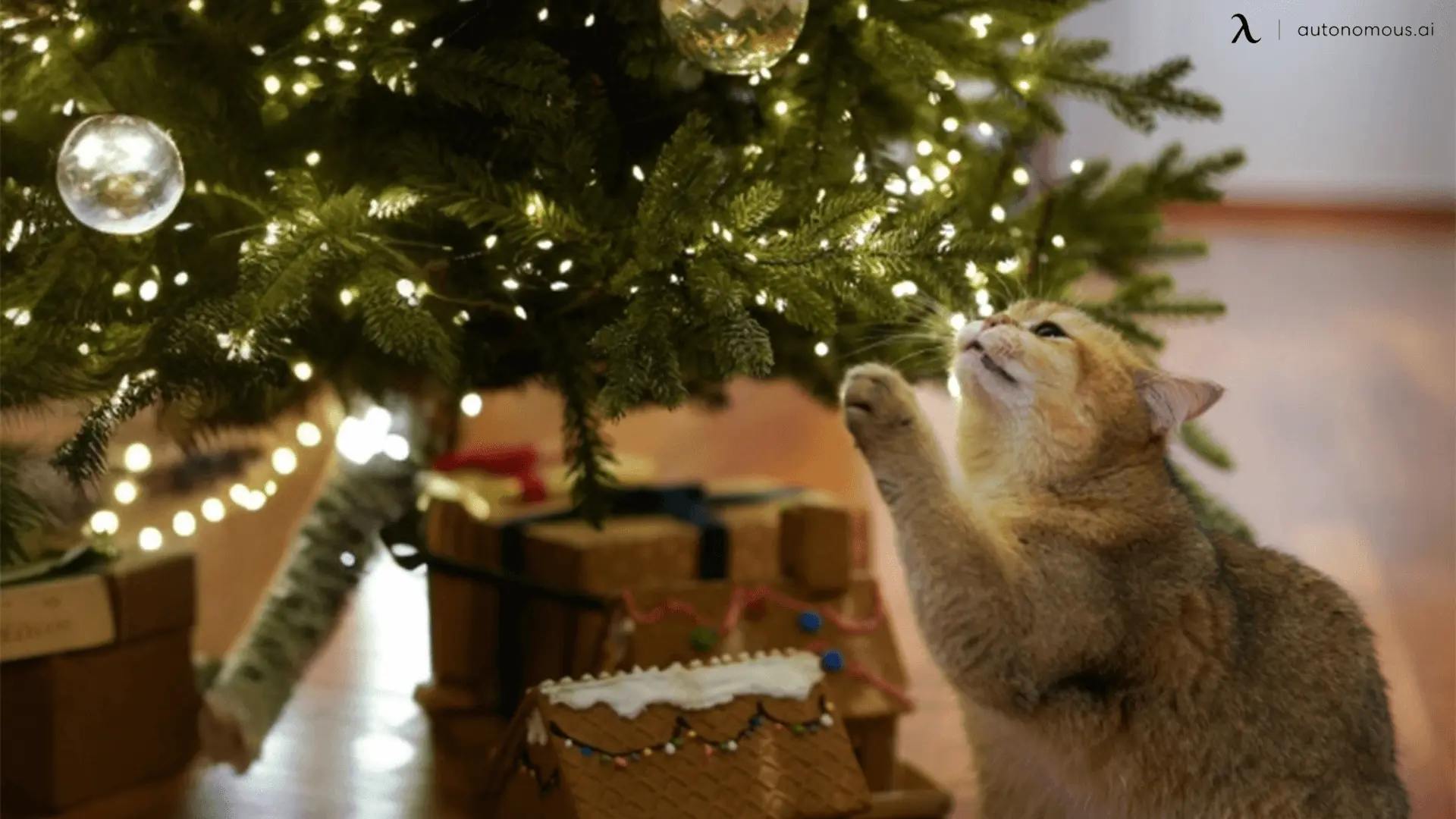
10. Avoid Excessive Boredom
Although cats are naturally independent and aloof, it does not mean you can leave your cat on its own all the time. It also requires some activity once in a while to keep it entertained. Boredom is one of the things that causes your cat to start scratching your furniture. If you do not have a lot of time to spend with your pet, buy it a ball of yarn or something else to play with while you are away.
The Best Fabric Material for Cat Owners
When buying furniture, do you ever stop to think whether the items you want are suitable for your home? This is something that, as cat owners, you need to consider very carefully. Not all fabric is suitable for use in a home with cats.
Consider the following types of fabrics that have demonstrated great resilience to cat claws:
Synthetic
Synthetic fibers are very resistant to being scratched and, therefore, are great options if you have a cat around the house. Another added advantage is that this type of material is very affordable and easy to clean. You will not need to hire a professional cleaner if you notice that your furniture needs cleaning, which is another way to save money down the road.
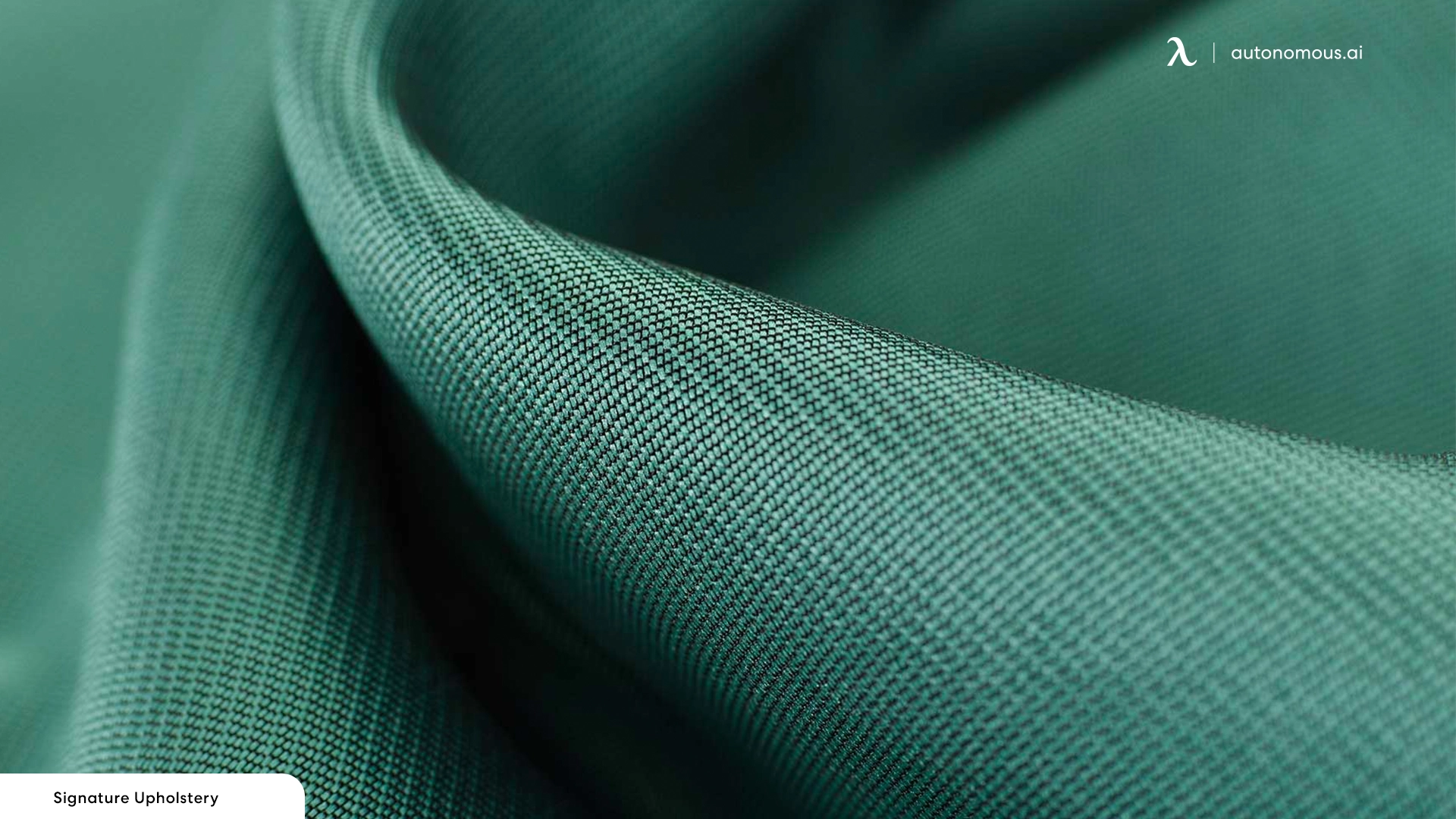
Microfiber
Microfiber is made of very tightly woven fibers that your cat will not be able to get its claws between. This means when your cat tries to scratch the fiber, its claws will simply slide off. There are lots of great options available if you want to buy good quality microfiber furniture, such as that found in many fabric stores around the country.
Leather
If you are willing to spend a little extra to ensure adequate furniture protection from cats, you should consider buying leather items. However, you need to buy only genuine leather for maximum protection, because other types of synthetic leather may not be strong enough to withstand your cat's claws.
While leather is very durable and often beautifully designed, it is a lot more expensive than other types of material. On the upside, buying leather is a lifetime investment and your home will look a lot better.

Tightly Woven Fabric
Any fabric that has a tight weave should do well against cat claws. This means you need to consider items such as those made from denim or canvas. However, these materials also have a tendency of attracting a lot of cat fur, which may mean you will need to clean them more often.
To avoid the extra cleaning, you should consider buying furniture that matches the fur color on your cat, although this may mean having to reconsider your entire décor, so think carefully before you do anything.
Fabrics You Should Avoid
There are also certain types of fabrics you are not recommended to buy if you have cats in the home. Unless you want to end up spending more on furniture protectors for cats, avoid the following types of fabric:
Suede
Suede looks quite good on furniture until your cat gets hold of it! Not only can it be damaged by your cat's claws, but any spillages your pet may cause will be very difficult to clean up. If you don't want to end up dealing with ruined fabrics, stay away from suede-covered furniture.
Silk and Velvet
Silk and velvet are simply too delicate to have in the home if you have cats around. Your cat will find it way too easy to tear these fabrics into pieces. If something is spilled on silk or velvet, you most likely will require hiring professional cleaners, which is an added expense that you do not want to have to deal with regularly.

Open Weave Fabric
The problem with open-weave fabric is that it is too easy for your cat to get its claws stuck between the weaves, causing serious damage when the cat pulls its claws out. As a result, you will notice that you get a lot of snags and loose threads when you have this fabric. Dust will also easily get trapped in the fibers, meaning you will have to clean more regularly.
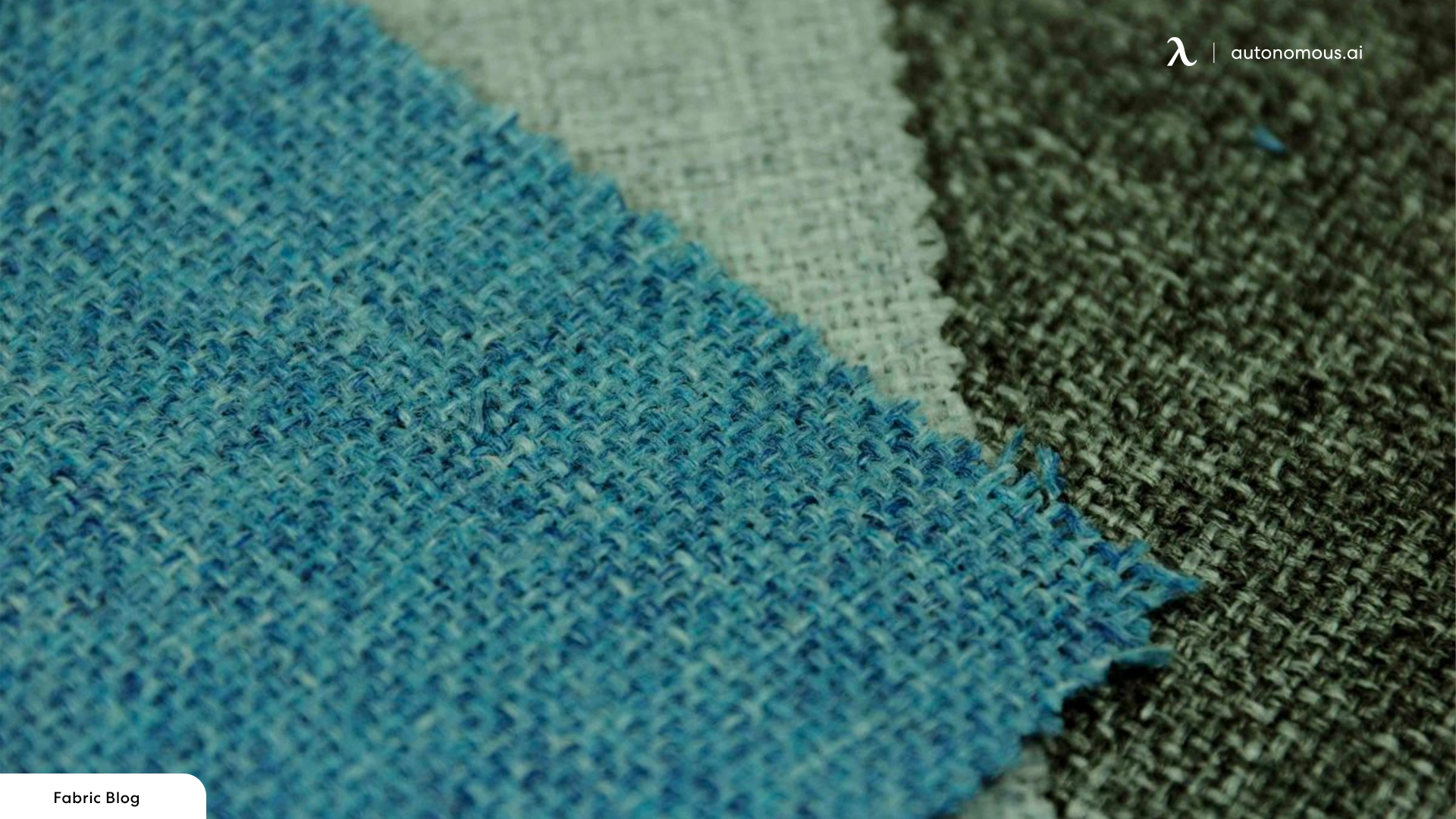
FAQs
What smells do cats hate on furniture?
Citrus, thyme, and rosemary all have distinct smells that have been shown to discourage cats from getting close. As a bonus, these smells will help your house to spell pleasant while you protect your furniture.
Will vinegar keep cats from scratching furniture?
Yes, the strong smell of vinegar has been shown to prevent cats from scratching furniture. However, you have to make sure that you dilute the vinegar first. Use equal parts vinegar and water, and only spray a very little amount at a time.
Is it okay to spray a cat with vinegar?
As long as you are using a dilute concentration, it is ok to spray your cat with vinegar. It will not like the smell, but it is a great way to control fleas.
What material do cats hate?
Cats hate the stickiness of double-sided tape, so you should consider using it to discourage them from scratching. They also hate anything that smells of vinegar, thyme, rosemary, and citrus.
Save Your Furniture With a Few Simple Tricks!
With the tips discussed in this article, it is possible to make sure that you take the right steps to provide furniture protection from cats. Just a few decisions when buying fabric and training your cat can provide a lifetime of protection for your furniture. If you have been struggling with your cat scratching your furniture, visit Autonomous for the best quality office furniture on the market.
.svg)








